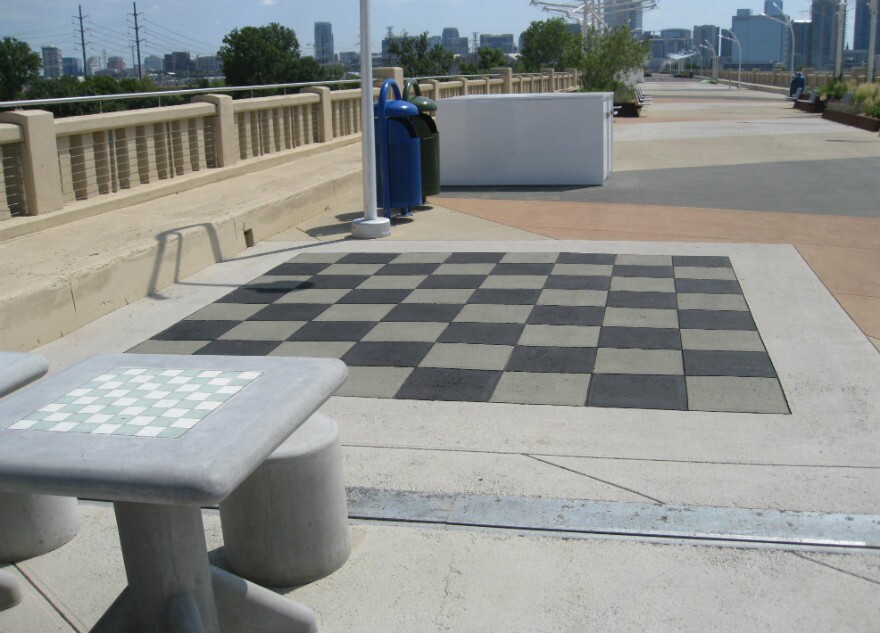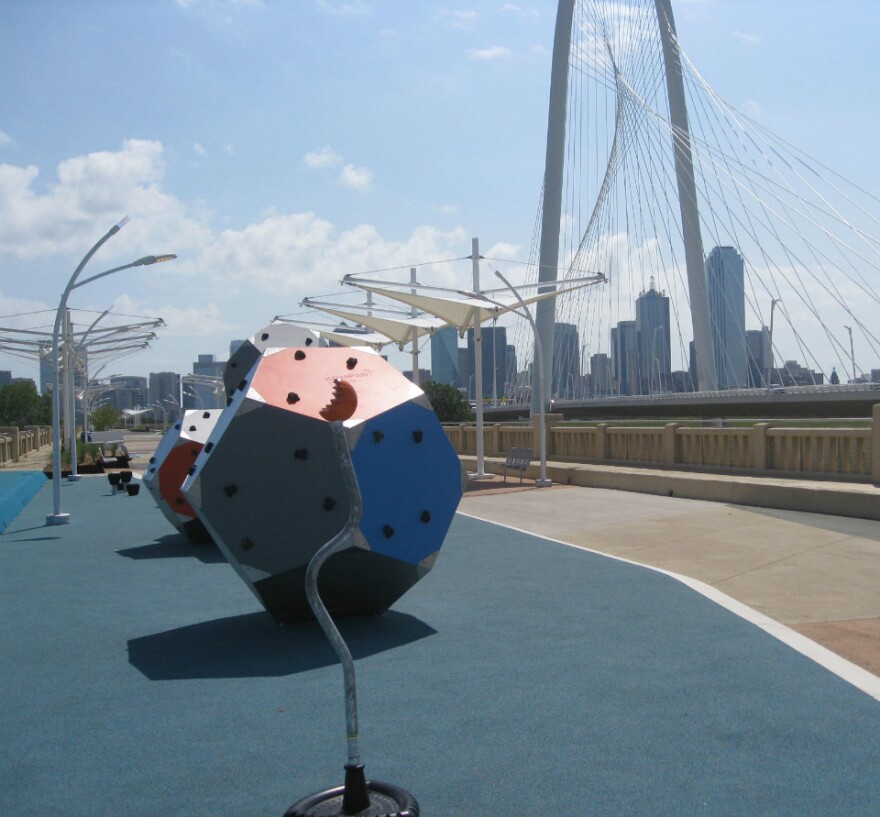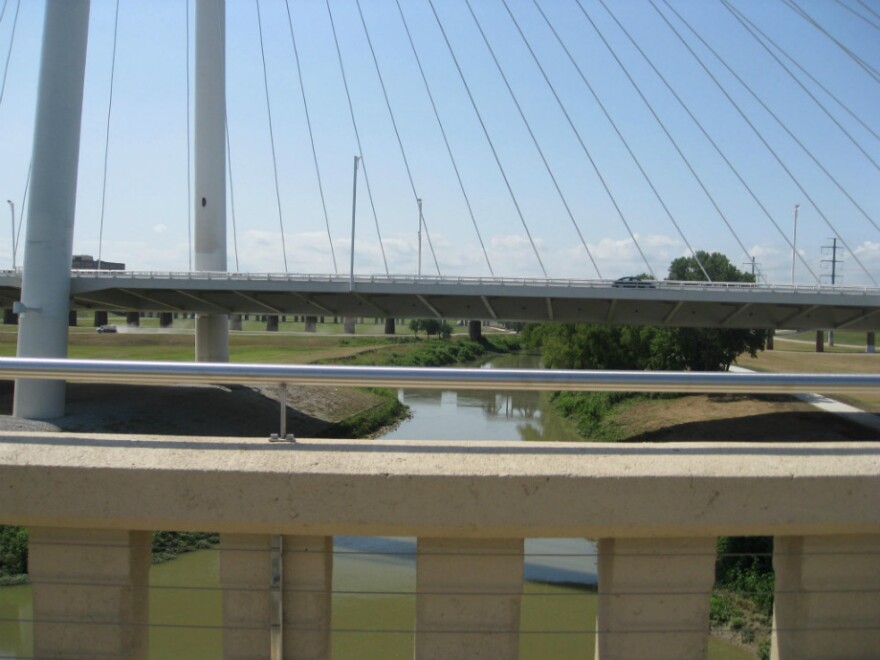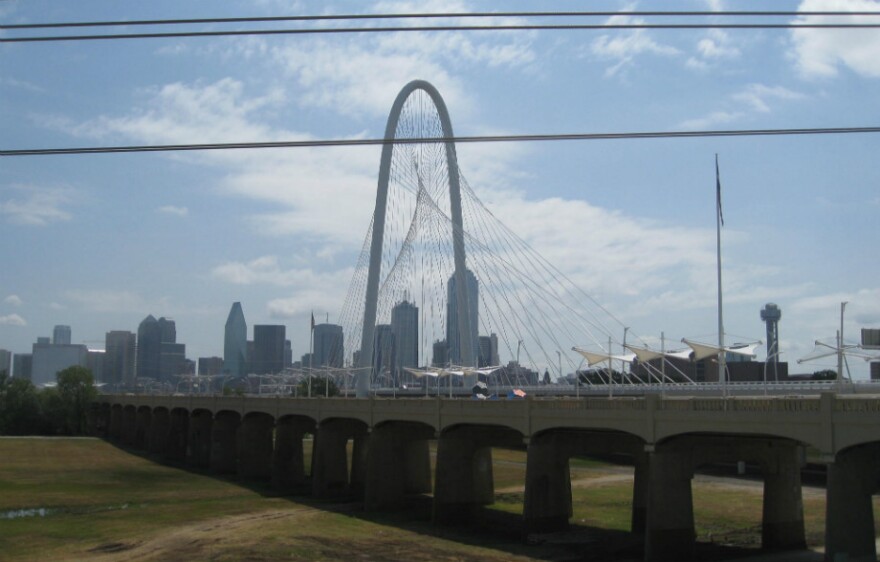Dallas’ unusual effort to turn an old bridge into a new park culminates this weekend when the Continental Bridge Park opens Sunday. Here’s a sneak peek.
Rick Davis says there’s no question about the demand for this 1930s bridge that has been converted for walkers and cyclists.
He’s seen a few people trekking from Riverfront to Trinity Groves already.

“There’s no other way to cross the river here,” Davis says. “You can’t cross on the Margaret Hunt Hill Bridge unless you walk the Commerce or go down to Sylvan, the new bridge over here. A lot of people use this to get into downtown, bikes and what have you.”
Davis would know. He’s the construction superintendent who’s been up here for months as crews drilled new shafts, then transferred loads from weak, old columns to strong, new ones. The 1,900-foot bridge from levee to levee boasts a lot more than a walkway, says Shawn Williams, with the city of Dallas.
“People can come and enjoy a Bocce court,” Williams said. “There are going to be seating areas, a chess board, not only just sit-down chess but life-sized chess pieces that people will be able to enjoy as well. We want this to be a year-round attraction where people can come and enjoy the bridge and river in a way they haven’t before.”

There’s also a playground with colorful, geometric climbing blocks on a safe, soft surface. Lounge chairs line up near rows of built-in metal seats. Spans of tall, white cloth block the sun and others, of rope mesh, will shade visitors when vines grow and curl over them.

It’s also a scenic extension of the city’s hike and bike trails, thanks to the 2012 bond package.
“And it’s kind of the first time we get to bring people in the urban area to the river," said Sarah Standifer, assistant director of the Trinity River Corridor Project. “And you get close up for access to wildlife, nature, and enjoy your ride.”

On Sunday special events run throughout the day. A 5k run kicks off at 7 a.m.; there’s a gospel brunch requiring tickets; vintage cars; an exhibit of old doors transformed by area artists; and a 1930s dance-a-thon and speakeasy at night, honoring the year the viaduct was born.


